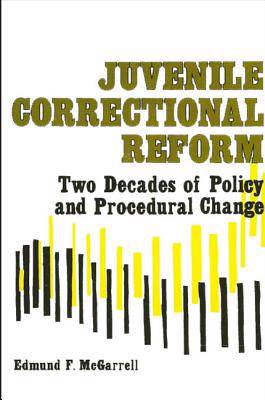
- Afhalen na 1 uur in een winkel met voorraad
- Gratis thuislevering in België vanaf € 30
- Ruim aanbod met 7 miljoen producten
- Afhalen na 1 uur in een winkel met voorraad
- Gratis thuislevering in België vanaf € 30
- Ruim aanbod met 7 miljoen producten
Zoeken
€ 145,45
+ 290 punten
Uitvoering
Omschrijving
This book addresses the divergent reform agendas that have shaped American juvenile justice systems during the last two decades. Testing and extending the theory of social reform developed by Ohlin, et al. in their study of Massachusetts' juvenile justice reform, McGarrell investigates the process of change in New York State's juvenile corrections system because this state was a forerunner of both liberal and conservative national reform trends. He asks: "What juvenile justice policies have changed? Who has changed them, and why? What has been the effect on juvenile corrections, and ultimately, on youth?" Juvenile Correctional Reform suggests that many factors--as broad as cultural shifts in prevailing political ideology, and as narrow as the individual initiative of an agency head--have shaped policy and procedure at specific times. It also provides an important case study of an organization in relation to its environment during a period of unprecedented and often contradictory demands for change in juvenile corrections.
Specificaties
Betrokkenen
- Auteur(s):
- Uitgeverij:
Inhoud
- Aantal bladzijden:
- 219
- Taal:
- Engels
- Reeks:
Eigenschappen
- Productcode (EAN):
- 9780887067594
- Verschijningsdatum:
- 8/07/1988
- Uitvoering:
- Hardcover
- Formaat:
- Genaaid
- Gewicht:
- 471 g

Alleen bij Standaard Boekhandel
+ 290 punten op je klantenkaart van Standaard Boekhandel
Beoordelingen
We publiceren alleen reviews die voldoen aan de voorwaarden voor reviews. Bekijk onze voorwaarden voor reviews.











